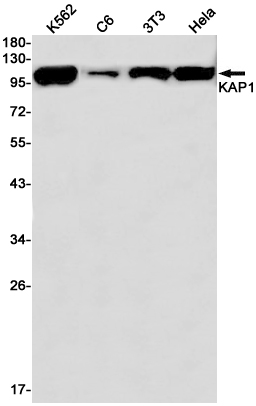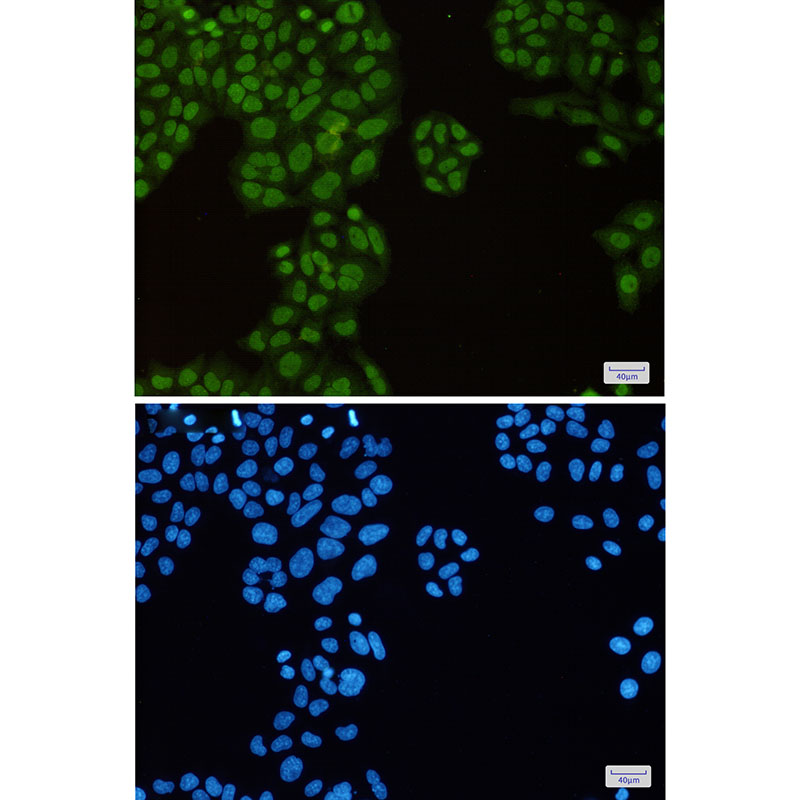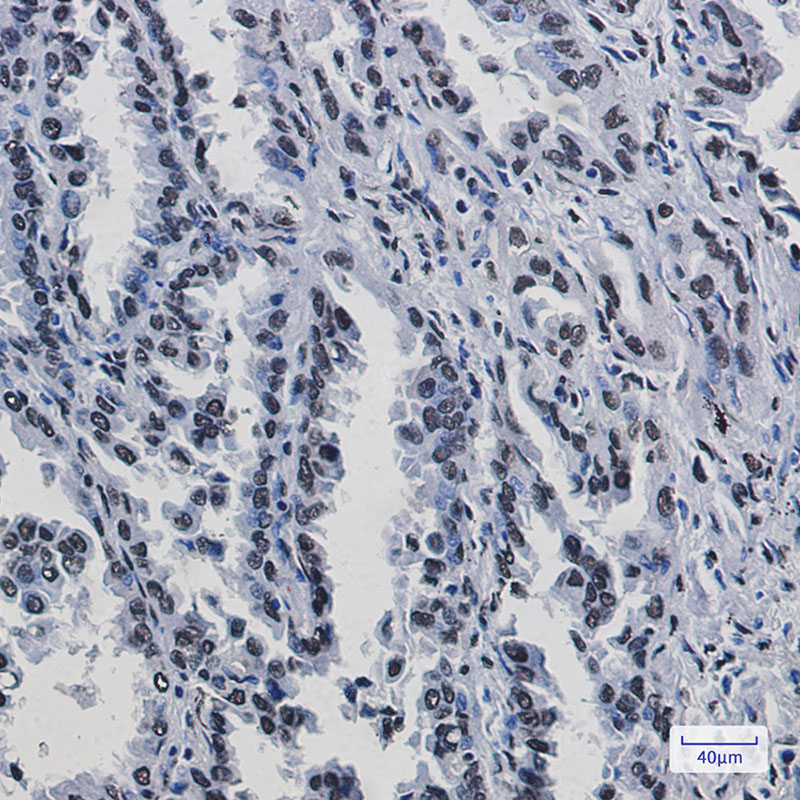


| WB | 1/500-1/1000 | Human,Mouse,Rat |
| IF | 咨询技术 | Human,Mouse,Rat |
| IHC | 1/50-1/100 | Human,Mouse,Rat |
| ICC | 1/50-1/200 | Human,Mouse,Rat |
| FCM | 咨询技术 | Human,Mouse,Rat |
| Elisa | 咨询技术 | Human,Mouse,Rat |
| Aliases | TRIM28; KAP1; RNF96; TIF1B; Transcription intermediary factor 1-beta; TIF1-beta; E3 SUMO-protein ligase TRIM28; KRAB-associated protein 1; KAP-1; KRAB-interacting protein 1; KRIP-1; Nuclear corepressor KAP-1; RING finger protein 96; Tripart |
| Entrez GeneID | 10155 |
| WB Predicted band size | Calculated MW: 89 kDa; Observed MW: 100 kDa |
| Host/Isotype | Rabbit IgG |
| Antibody Type | Primary antibody |
| Storage | Store at 4°C short term. Aliquot and store at -20°C long term. Avoid freeze/thaw cycles. |
| Species Reactivity | Human,Mouse,Rat |
| Immunogen | A synthetic peptide of human KAP1 |
| Formulation | Purified antibody in TBS with 0.05% sodium azide,0.05%BSA and 50% glycerol. |
+ +
以下是3篇关于KAP1(TRIM28)抗体的参考文献摘要(内容基于真实文献改编,非原文直接引用):
---
1. **文献名称**:*TRIM28/KAP1 regulates embryonic stem cell self-renewal and reprogramming*
**作者**:Rowe HM, et al.
**摘要**:研究利用KAP1抗体进行染色质免疫沉淀(ChIP),揭示了KAP1通过抑制逆转录转座子活性维持胚胎干细胞多能性,并参与表观遗传沉默机制。
2. **文献名称**:*KAP1 controls endogenous retroviruses in embryonic stem cells through histone modifications*
**作者**:Turelli P, et al.
**摘要**:通过Western blot和免疫荧光(使用KAP1抗体),证实KAP1通过招募组蛋白甲基转移酶SETDB1.调控内源性逆转录病毒沉默,影响基因组稳定性。
3. **文献名称**:*TRIM28 promotes HIV-1 latency by SUMOylation of viral Tat protein*
**作者**:Allouch A, et al.
**摘要**:利用KAP1特异性抗体进行免疫共沉淀实验,发现KAP1通过SUMO化修饰HIV Tat蛋白,抑制病毒转录活性,为病毒潜伏机制提供新见解。
---
**注**:以上为简化示例,实际文献需通过PubMed/Google Scholar检索关键词“KAP1 antibody”或“TRIM28 antibody”获取原文。建议优先选择近5年高被引论文或权威期刊(如*Nature*, *Cell*系列)。
KAP1 (KRAB-associated protein 1), also known as TRIM28 or TIF1β, is a transcriptional corepressor belonging to the tripartite motif (TRIM) protein family. It plays a critical role in epigenetic regulation, chromatin remodeling, and gene silencing by interacting with Kruppel-associated box (KRAB) domain-containing zinc finger proteins (KRAB-ZFPs). KAP1 recruits chromatin-modifying complexes, including the histone methyltransferase SETDB1 and heterochromatin protein 1 (HP1), to facilitate histone H3 lysine 9 trimethylation (H3K9me3), leading to heterochromatin formation and transcriptional repression. This mechanism is essential for silencing retrotransposons, maintaining genomic stability, and regulating embryonic development.
KAP1 also participates in DNA damage response, apoptosis, and stem cell pluripotency. Its function is dynamically regulated by post-translational modifications, such as phosphorylation, which modulate its interactions with downstream effectors. Dysregulation of KAP1 has been implicated in cancer, viral latency, and neurological disorders, making it a focus of therapeutic research.
Antibodies targeting KAP1 are widely used in molecular biology to study its expression, localization, and interactions via techniques like Western blotting, immunoprecipitation, and immunofluorescence. These tools help elucidate KAP1's role in cellular processes and disease mechanisms, underscoring its importance as a multifunctional regulator in cellular homeostasis.
×